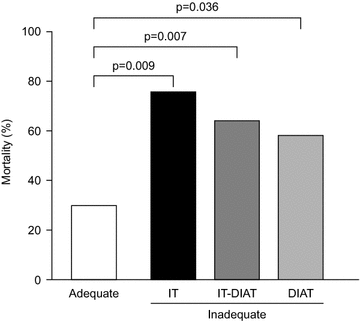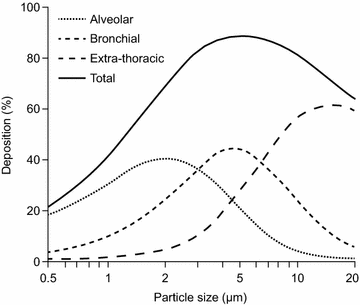Characteristics of an ideal nebulized antibiotic for the treatment of pneumonia in the intubated patient
- PMID: 27090532
- PMCID: PMC4835402
- DOI: 10.1186/s13613-016-0140-x
Characteristics of an ideal nebulized antibiotic for the treatment of pneumonia in the intubated patient
Abstract
Gram-negative pneumonia in patients who are intubated and mechanically ventilated is associated with increased morbidity and mortality as well as higher healthcare costs compared with those who do not have the disease. Intravenous antibiotics are currently the standard of care for pneumonia; however, increasing rates of multidrug resistance and limited penetration of some classes of antimicrobials into the lungs reduce the effectiveness of this treatment option, and current clinical cure rates are variable, while recurrence rates remain high. Inhaled antibiotics may have the potential to improve outcomes in this patient population, but their use is currently restricted by a lack of specifically formulated solutions for inhalation and a limited number of devices designed for the nebulization of antibiotics. In this article, we review the challenges clinicians face in the treatment of pneumonia and discuss the characteristics that would constitute an ideal inhaled drug/device combination. We also review inhaled antibiotic options currently in development for the treatment of pneumonia in patients who are intubated and mechanically ventilated.
Keywords: Clinical cure; Gram-negative bacteria; Hospital-acquired pneumonia; Inhaled antibiotics; Multidrug resistance; Nebulizers; Systemic antibiotics; Ventilator-associated pneumonia.
Figures



References
-
- Melsen WG, Rovers MM, Groenwold RHH, Bergmans DCJJ, Camus C, Bauer TT, Hanisch EW, Klarin B, Koeman M, Krueger WA, Lacherade JC, Lorente L, Memish ZA, Morrow LE, Nardi G, van Nieuwenhoven CA CA, O’Keefe GE, George Nakos G, Scannapieco FA, Seguin P, Staudinger T, Topeli A, Ferrer M, Bonten MJM. Attributable mortality of ventilator-associated pneumonia: a meta-analysis of individual patient data from randomised prevention studies. Lancet Infect Dis. 2013;13:665–671. doi: 10.1016/S1473-3099(13)70081-1. - DOI - PubMed
Publication types
LinkOut - more resources
Full Text Sources
Other Literature Sources

